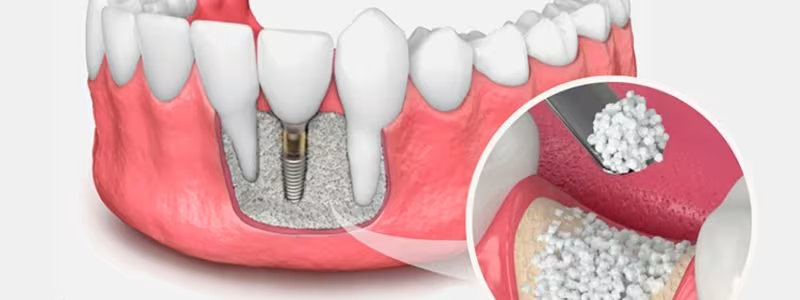Mon - Sun 9 AM - 9 PM
 +91 9000021174
+91 9000021174  [email protected]
[email protected]
5.0
8765 Reviews
Bone grafting is a surgical procedure used in dentistry to rebuild or regenerate bone tissue in areas where it has been lost or compromised. While it’s commonly associated with dental implants, bone grafting is equally important for preserving and supporting natural teeth. The bone around your teeth provides critical support, and when it deteriorates due to gum disease, trauma, or infection, it can lead to tooth instability or even tooth loss.

In many cases, patients suffering from periodontal (gum) disease experience bone loss around the roots of their teeth. This can compromise the long-term health and stability of otherwise healthy teeth. Bone grafting around natural teeth is performed to:
Preserving the bone structure is crucial, as it supports not only your teeth but also the overall facial aesthetics.
There are several reasons why bone may begin to recede or deteriorate around natural teeth:
Bone grafting around natural teeth is a minor surgical procedure typically done under local anesthesia. Here's how it works:
Several types of bone graft materials are available, each with its own advantages:
Your dentist will recommend the most suitable option based on your needs and medical history.
Choosing bone grafting can provide numerous benefits for your oral health and overall quality of life:
Most patients recover well after bone grafting with minimal discomfort. Mild swelling or tenderness may occur, which is manageable with prescribed medications or over-the-counter pain relievers. Healing typically takes a few months, depending on the size and location of the graft. Good oral hygiene and follow-up visits are essential to monitor the healing process and ensure long-term success.
To protect the results of your bone graft and maintain overall oral health:
If you've been diagnosed with bone loss around your natural teeth or are experiencing symptoms such as tooth mobility, gum recession, or persistent inflammation, you may be a candidate for bone grafting. A thorough examination by a dental professional will determine whether this treatment is appropriate and help you understand your options.
At The Dental Specialists, we specialize in advanced periodontal and restorative procedures, including bone grafting around natural teeth. Our goal is to preserve your natural smile and help you maintain strong, healthy teeth for years to come. Contact us today to schedule a consultation and learn more about how bone grafting can support your dental health.
Bone grafting isn’t just for people with missing teeth. Even if you still have your natural teeth, bone loss can occur due to periodontal (gum) disease, injury, or chronic inflammation. If left untreated, this bone loss can lead to tooth loosening or shifting. Grafting helps stabilize these teeth by regenerating lost bone and preventing further damage.
Healing time varies depending on the extent of the graft and your overall health. On average, the initial healing takes 1–2 weeks, but full integration of the graft with your natural bone (a process called osseointegration) can take 3–6 months. Regular follow-ups will help your dentist track the healing process.
In many cases, yes. If bone loss around a tooth is detected early, bone grafting combined with periodontal therapy can stabilize a loose tooth by regenerating the lost bone support. However, success depends on the severity of bone loss, the health of surrounding tissues, and your oral hygiene habits.
If a bone graft is recommended and not performed, bone loss may continue, eventually compromising the stability of the tooth. This could result in tooth mobility, shifting, or tooth loss, and it may complicate future treatments like dental implants.
Your dentist will provide specific aftercare instructions, but general tips include:
Good oral hygiene and regular follow-up visits are essential for long-term success.